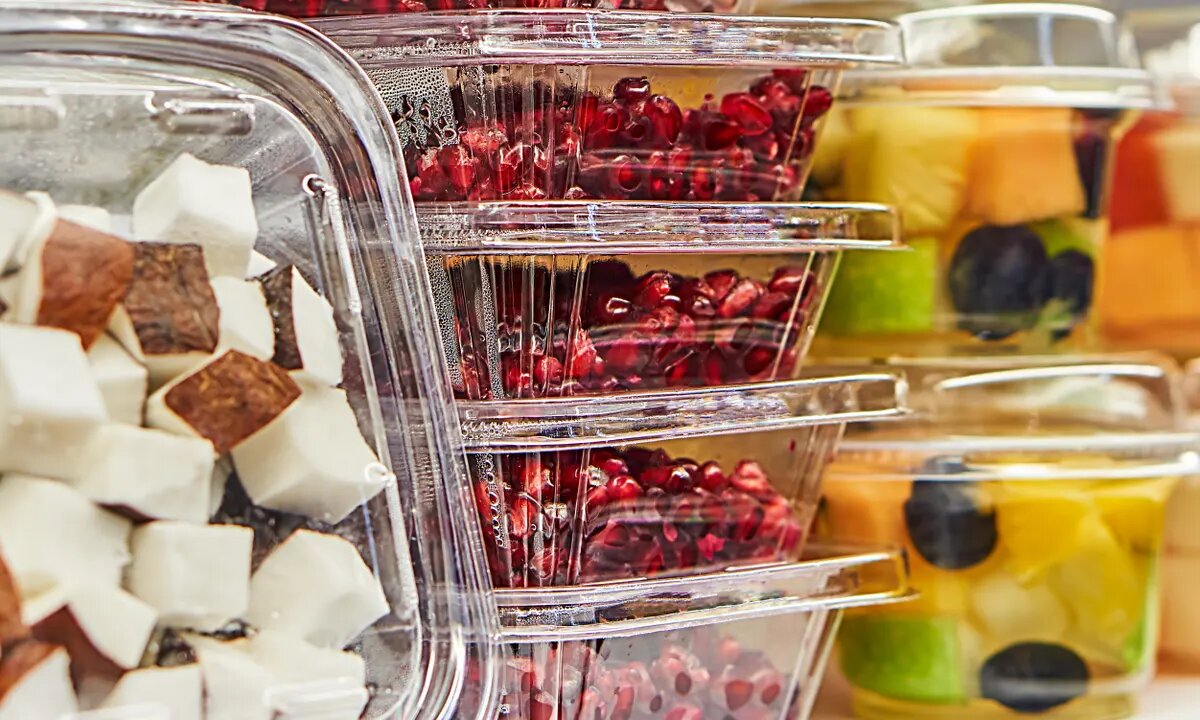Food containers and packaging materials play an indispensable role in preserving the freshness, safety, and quality of food products, while also providing information and aesthetic appeal to consumers. However, the very materials that help in keeping our food safe can sometimes be a source of potential hazards. Over the years, there’s been increasing concern about the leaching of harmful chemicals from packaging materials into the food they contain. This article delves into this topic, aiming to understand the potential risks and the chemicals of concern.
Types of Packaging Materials
Packaging materials can be broadly classified. This includes plastic, metal, glass, paper, and board. Each material has its own unique set of chemicals used in its manufacture, and design. These chemicals can sometimes transfer into food, especially under conditions such as high temperatures, acidic foods, or long storage periods.
Potential Chemical Hazards in Packaging Materials
Bisphenol
A (BPA) often found in polycarbonate plastics and epoxy resins, BPA has been a point of concern due to its estrogenic properties. Research indicates that BPA can disrupt endocrine functions and may lead to various health problems including hormonal imbalances, developmental issues in children, and possibly an increased risk of certain cancers.
Phthalates
Used as plasticizers in PVC (polyvinyl chloride) plastics, phthalates have been associated with endocrine disruption and reproductive toxicity.
Perfluorinated Compounds
Perfluorinated Compounds are commonly used in food packaging to repel oil and water, especially in microwave popcorn bags, fast-food wrappers, and pizza boxes. PFCs can persist in the environment and have been associated with adverse health outcomes including liver toxicity and potential carcinogenic effects.
Heavy Metals
Metals like lead, cadmium, and antimony can leach from certain packaging materials, especially if the food is acidic. These metals can accumulate in the body and lead to neurotoxicity and other health issues.
Styrene
Styrene found in polystyrene cups and take-out containers, styrene can migrate into hot foods and drinks. While low levels are generally considered safe, high exposure can have neurotoxic and possibly carcinogenic effects.
Formaldehyde
Formaldehyde is used in some food packaging adhesives and resins, formaldehyde can leach into food and has been classified as a human carcinogen.
Printing Inks and Adhesives
Packaging designs often utilize inks, which can contain a variety of chemicals. If not appropriately isolated, these can migrate into the food, especially if the packaging is directly in contact with the food.
Factors Affecting Chemical Migration
High temperatures can increase the rate of chemical migration. Hot foods or drinks, or microwave use, can especially trigger this.
- Food composition such as acidic or fatty foods can enhance the migration of certain chemicals.
- Long storage times are risky because packaging materials have a tendency to leach chemicals more easily with time.
- Damaged or compromised packaging can increase the risk of chemical migration. AKISupplies provide a healthier alternative to foam and plastic. Your healthy and fresh food is protected in its best packaging.
Regulations and Safe Practices
Governments and international bodies have established regulations and guidelines for food contact materials to ensure consumer safety. For instance:
European Union
European Union has a framework regulation on food contact materials, which sets out the general principles of safety and inertness for packaging.
USA
The Food and Drug Administration (FDA) evaluates food contact substances to determine their safety in use. Nevertheless, these regulations can’t always keep pace with the evolving array of chemicals and materials used in packaging.
Consumer Measures
Choose Glass or Stainless Steel
Whenever possible, choose glass or stainless steel containers, especially for hot foods or drinks.
Check for Labels
Look for labels indicating that the product is free from certain harmful chemicals like BPA-free.
Avoid Microwaving in Plastic
Even if it says “microwave safe,” it’s prudent to transfer food to a ceramic or glass container before microwaving.
Store Safely
Avoid storing acidic or fatty foods in plastic containers for long durations.
Conclusion
The modern world’s reliance on convenient, efficient packaging materials has undeniably brought with it certain chemical risks. While most packaging is safe and adheres to regulatory standards, being informed about potential hazards is crucial. This knowledge allows both consumers and manufacturers to make choices that prioritize health and safety over mere convenience or aesthetic appeal. As research continues and our understanding deepens, it’s hoped that future packaging innovations will be both safe and sustainable.


